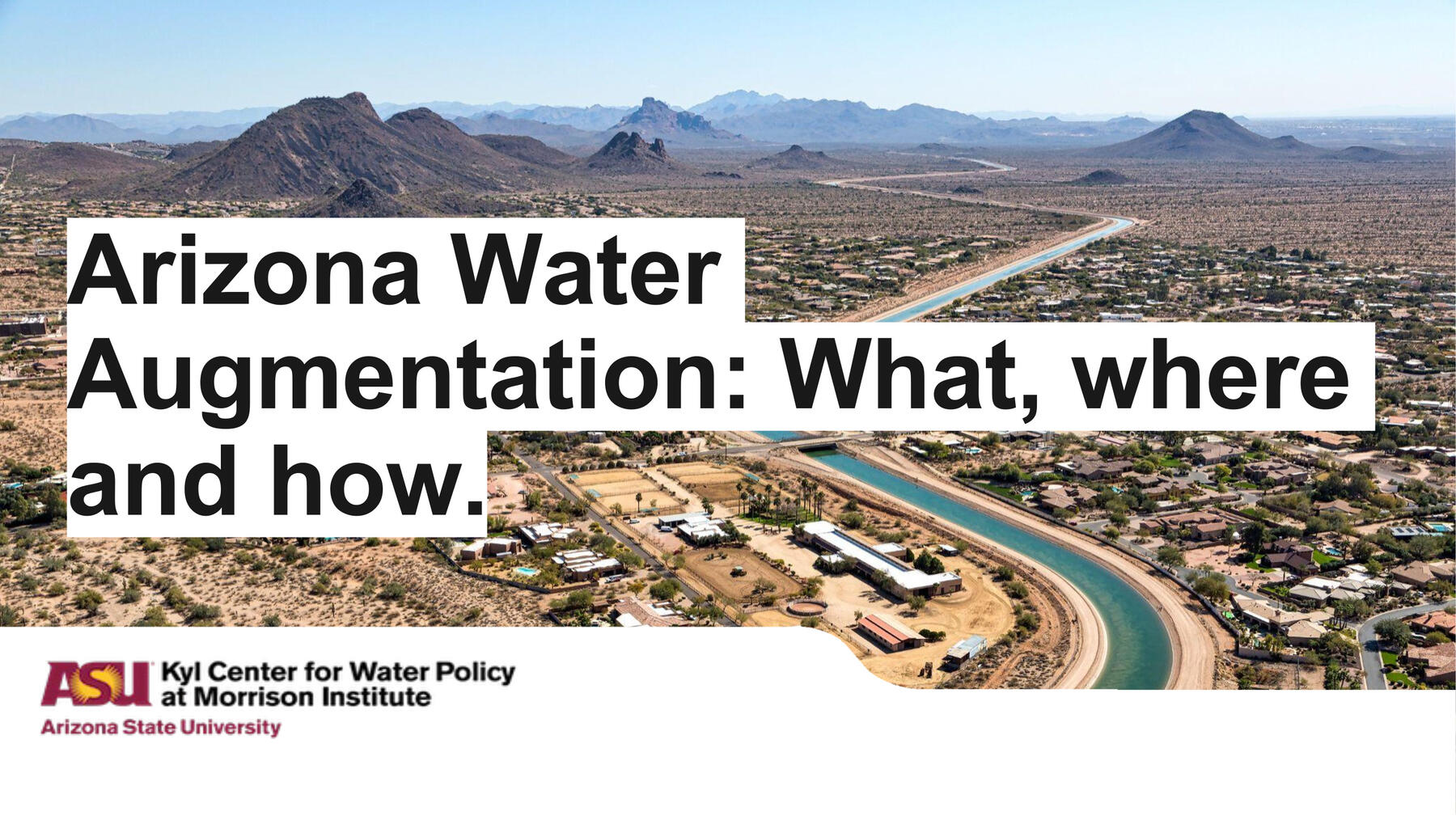
Arizona Water Augmentation - Part 5: What are the obstacles to augmentation?
Part 5: What are the obstacles to augmentation?
A project to move water, change its use, alter its quality or store it is likely to be expensive.
- Water is both heavy and corrosive. Moving it across large distances typically requires concrete, iron, steel and – unless gravity can be harnessed – energy.
- Changing water’s quality requires advanced technology, specialized skill and, in the case of brackish groundwater or seawater, energy, all of which are costly.
- Depending on scale, storing water can also be capital-intensive, especially if new structures are needed.
As an example, in 2024, local water providers will pay $3,400 per acre-foot for water from the Claude “Bud” Lewis Carlsbad Desalination Plant near San Diego – more than fourteen times the current price of Colorado River water delivered through the Central Arizona Project (CAP) to municipal and industrial users. For context, if the city of Surprise had to pay this price for its Colorado River water, single-family water rates might increase from the current average of $50.15 per month to over $175 per month.
Water augmentation projects often entail legal, regulatory and political hurdles as well. Because constructing dams, pipelines and canals may impact human communities and wildlife habitats, environmental studies are required to evaluate potential impacts and to determine how they can be mitigated. Where augmentation involves the use of existing federally funded infrastructure, federal approval is required for a new use of that infrastructure. For example, approval of the U.S. Secretary of the Interior is necessary to use the CAP canal to transport water supplies other than the Colorado River water originally designated for importation into central Arizona.
Disagreement over who should pay for augmentation is another challenge. Because many of the augmentation projects currently contemplated for Arizona would be very costly, those who do not benefit from the water supply are likely to oppose paying for it. See https://www.amwua.org/blog/guiding-principles-for-augmentation-discussions
Governance can also be a sticky issue. If water users are expected to pay for new supplies, they usually demand a say in how those supplies are allocated. Further, some may oppose augmentation, believing that better management or reallocation of existing water resources is preferable to acquiring new supplies.
And then there’s the politics. Water augmentation is usually based on projects that move water from rural areas to urban ones. Rural voters hold valid concerns about such transactions as they relate to their economies and way of life. Western state legislators are often sensitive to these fears; here in Arizona legislators have moved to protect certain water supplies from such transfers. The big city “stealing” the little guy’s water is never a good look.
Technology is almost never the issue—humans have been moving water, altering its quality and storing it successfully for thousands of years. Water augmentation projects succeed in places where the cost, politics and complexity can be overcome. In other words, the end use of the water must be worth the trouble.
This blog series is co-sponsored by the Arizona Water Innovation Initiative, a multi-year partnership with the state led by Arizona State University’s Julie Ann Wrigley Global Futures Laboratory in collaboration with the Ira A. Fulton Schools of Engineering.